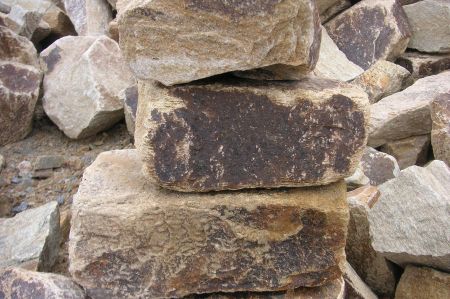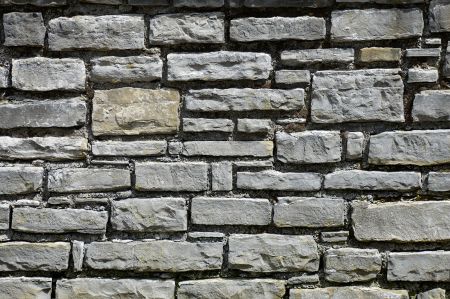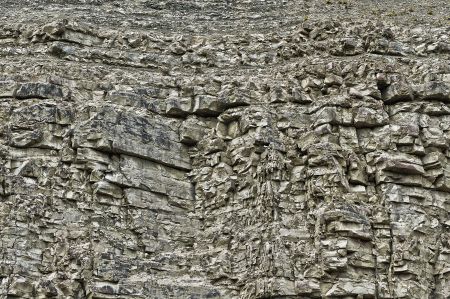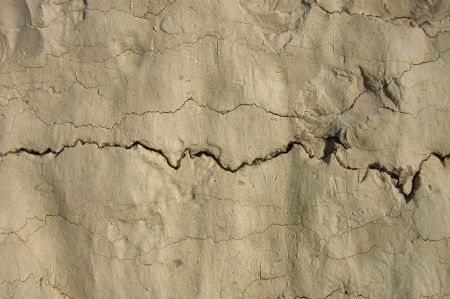Schweinfurt - Looking for limestone for tower Höpperle!
- Written by Portal Editor
In July we reported on the plans to rebuild one of the towers of the old city wall in Schweinfurt. Now, not only are there signs that the project will be approved by the building authorities, but that the city of Schweinfurt itself will also be taking over the project as a property developer.
These were the prerequisites for the implementation of the "Stadtmauerturm am Höpperle" project, for which a large amount of donations from the local population has already been promised and whose implementation has been assured by a large number of craft businesses from different trades.
Maybe with your help and support?
 In order for the organizers of the city wall tower to take a big step forward, there is a lack of material for the masonry itself, which was once made of limestone. Of course, the limestone material could be financed through the donations, which would then have to be used to buy limestone material of a new date, with the consequence that the donation money used for this will not be available elsewhere. In addition to the new procurement, there is also the possibility of researching existing limestone material stored somewhere.
In order for the organizers of the city wall tower to take a big step forward, there is a lack of material for the masonry itself, which was once made of limestone. Of course, the limestone material could be financed through the donations, which would then have to be used to buy limestone material of a new date, with the consequence that the donation money used for this will not be available elsewhere. In addition to the new procurement, there is also the possibility of researching existing limestone material stored somewhere.
In the Schweinfurt region there are some old houses made of limestone masonry. Should someone decide to demolish such masonry, according to the main organizer of the project, Peter Hofmann, it would be a solution if the material from the demolition could be reused for the tower construction.
 A good idea that may also prove to be practical. Maybe with your help and support?
A good idea that may also prove to be practical. Maybe with your help and support?
So we turn to you, dear readers of the Alaturka Journal: Do you know of a deposit / demolition of a limestone masonry that could be used to rebuild the tower at Höpperle in Schweinfurt?
If you can provide information about this, we would be happy if we could mediate. Please contact us via This email address is being protected from spambots. You need JavaScript enabled to view it..
Thanks very much
What is limestone anyway?
 Everyone knows limestone from their own environment when it comes to removing the annoying buildup of limescale on pots or bathroom fittings. But is that the same as the building material as asked here?
Everyone knows limestone from their own environment when it comes to removing the annoying buildup of limescale on pots or bathroom fittings. But is that the same as the building material as asked here?
In the broadest sense, absolutely.
Limestone is an extremely variable rock; this concerns both its origin and its properties, appearance and economic usability. There is therefore a separate discipline within geology, carbonate sedimentology, which deals exclusively with the formation and properties of the various types of limestone. Limestones can belong to several types within the sedimentary rocks. However, most of the limestone is of biogenic origin, which means it was formed and deposited by living beings. However, limestone can also be precipitated from the water (as is often visible in households) by chemical processes (which in turn can be influenced by living beings). Furthermore, a rock consisting of calcium carbonate (limestone or marble) can be removed, transported and deposited elsewhere as clastic sediment.
 Limestone is a very common rock on the continents. Limestone is found both on relatively old geological tables and in geologically young mountains. The vast majority of limestones were originally formed in shallow sea regions and then raised above sea level by tectonic processes during different periods of the earth's history. Terrestrial limestones formed on the mainland almost always require older limestone deposits nearby, which are necessary as the source of calcium. For example, the travertine deposits in Thuringia are always linked to the presence of limestone from the shell limestone
Limestone is a very common rock on the continents. Limestone is found both on relatively old geological tables and in geologically young mountains. The vast majority of limestones were originally formed in shallow sea regions and then raised above sea level by tectonic processes during different periods of the earth's history. Terrestrial limestones formed on the mainland almost always require older limestone deposits nearby, which are necessary as the source of calcium. For example, the travertine deposits in Thuringia are always linked to the presence of limestone from the shell limestone
Large limestone deposits are found in Central Europe in the central and southern part of Germany, there mainly limestone from the shell limestone and the upper Jura. Limestones are also very common as Ice Age boulders in northern Germany. The limestone boulders mostly come from southern and central Sweden and from the central and northern Baltic Sea basin.
 Large landscapes that are predominantly characterized by limestone are, for example, the Swabian and Franconian Jura, as well as the northern Limestone Alps or the Dalmatian coast. The best-known mining area in Germany is in the Altmühltal with the Solnhofen limestone and the Jura limestone.
Large landscapes that are predominantly characterized by limestone are, for example, the Swabian and Franconian Jura, as well as the northern Limestone Alps or the Dalmatian coast. The best-known mining area in Germany is in the Altmühltal with the Solnhofen limestone and the Jura limestone.
Limestone has been quarried since at least Roman times. One of the oldest limestone quarries in Germany is the historic Rüdersdorf limestone quarry in Brandenburg, which dates back to the work of the Cistercians in the 13th century. Limestone is of enormous economic importance as a raw material for the construction industry and as a natural stone.
 In most cases, limestone has a light, grey to grey-yellow colour. Due to the addition of other minerals (e.g. iron compounds), stronger colours, especially red, also occur quite frequently. Bituminous limestones can also be dark grey to black in colour. Chemically precipitated limestones or limestones deposited by microorganisms are usually fine-grained and dense. These limes often contain pores and other cavities. Extremely large cavities contain freshwater limestones, primarily travertine. If limestone in the subsoil weathers, caves are formed. In the interplay of various factors, stalactite caves such as the Erdmannshöhle in Hasel are formed. The stalactites in these caves grow as sinter.
In most cases, limestone has a light, grey to grey-yellow colour. Due to the addition of other minerals (e.g. iron compounds), stronger colours, especially red, also occur quite frequently. Bituminous limestones can also be dark grey to black in colour. Chemically precipitated limestones or limestones deposited by microorganisms are usually fine-grained and dense. These limes often contain pores and other cavities. Extremely large cavities contain freshwater limestones, primarily travertine. If limestone in the subsoil weathers, caves are formed. In the interplay of various factors, stalactite caves such as the Erdmannshöhle in Hasel are formed. The stalactites in these caves grow as sinter.
Because of the comparatively good solubility of the carbonate, limestone is a rock that is relatively susceptible to chemical weathering and therefore forms special forms of solution. Conversely, however, the dissolved carbonate can be precipitated again and also produce special rocks and forms (tufa, sinter, travertine). Both are summarized under the term karst formation or karst.
 Limestone is one of the most important raw materials for the building materials industry. For this purpose, it is processed in lime works and converted into burnt lime. Or it is ground and mixed with clayey materials and burned into cement, which is the binding agent for the production of concrete (a mixture of cement, water and aggregates such as sand and gravel). Very pure limestone (white lime) is a raw material for the chemical industry or is processed into terrazzo (Ulmer white lime).
Limestone is one of the most important raw materials for the building materials industry. For this purpose, it is processed in lime works and converted into burnt lime. Or it is ground and mixed with clayey materials and burned into cement, which is the binding agent for the production of concrete (a mixture of cement, water and aggregates such as sand and gravel). Very pure limestone (white lime) is a raw material for the chemical industry or is processed into terrazzo (Ulmer white lime).
Porous limestones, especially fossil limestones, are one of the most important reservoir rocks for oil and gas. The richest oil deposits on earth on the Arabian Peninsula are in reef limestones that were formed in the Jurassic and Cretaceous periods. Therefore, limestone serves as an indicator when prospecting for deposits.
Please read as well:
125 years ago - Deutsche Bank got concession for Anatolian Railway
